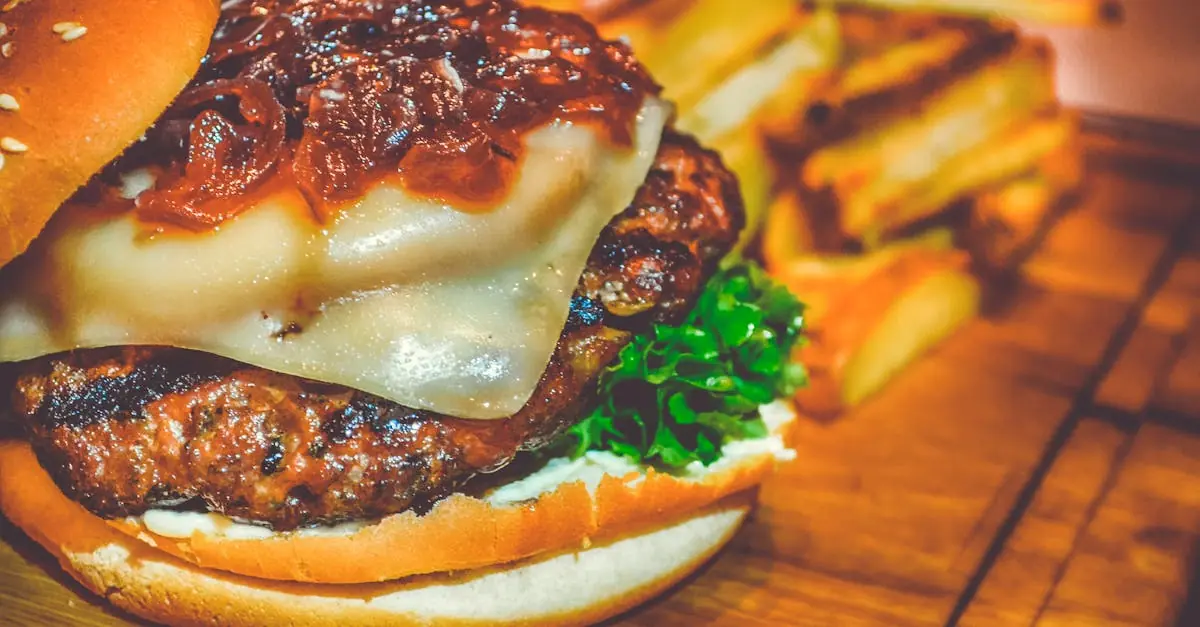Caramelizing onions is like turning ordinary into extraordinary. With just a little heat and patience, those humble bulbs transform into sweet, golden treasures that elevate any dish. Imagine biting into a burger topped with luscious, gooey onions or savoring a rich French onion soup that warms the soul. It’s a culinary magic trick that even novice cooks can master.
Table of Contents
ToggleWhat Is Caramelizing Onions?
Caramelizing onions refers to the cooking process that transforms the natural sugars in onions into a rich, sweet flavor. Gradually cooking sliced onions over low to medium heat encourages the sugars to break down and develop a deep golden color. This technique enhances the overall taste of the onions, making them a versatile ingredient.
Considering the timeframe, it typically takes 20 to 40 minutes to achieve proper caramelization, depending on the onion variety and heat level. The process involves stirring frequently, preventing the onions from burning and allowing for even cooking. As they soften, the released moisture helps concentrate flavors.
Utilizing different onion types can affect the caramelization outcome. Yellow onions yield a sweet taste, while red onions offer a milder flavor. Shallots provide a more delicate sweetness, perfect for gourmet dishes.
Many recipes incorporate caramelized onions, from savory tarts to stews. Adding them to burgers or using them as a topping on pizzas significantly elevates flavor profiles. Cooked slowly, these onions develop complex layers, enhancing simple meals.
Mastering this cooking skill can lead to discovering new recipes and enhancing existing ones. Caramelized onions contribute a depth of flavor that brightens countless dishes. Engaging with this culinary technique offers endless possibilities in the kitchen.
Benefits of Caramelizing Onions
Caramelizing onions provides significant advantages in culinary applications. This technique transforms the flavor profile and adds nutritional value to many dishes.
Enhancing Flavor
Caramelized onions impart a deep, rich sweetness that elevates various meals. The slow cooking process develops complex flavors that complement savory dishes. Onions become jam-like, making them perfect for burgers, pizzas, and soups. Different onion types create diverse flavor profiles, enriching every dish. For instance, yellow onions offer a balanced sweetness, while red onions present a milder, sweeter taste. Chefs appreciate caramelized onions for their ability to add depth without overwhelming other ingredients.
Nutritional Aspects
Caramelizing onions retains essential nutrients while enhancing their natural benefits. Onions provide vitamins C and B6, along with minerals like manganese and potassium. This process may also increase antioxidant levels, aiding in the body’s defense against oxidative stress. Cooking onions softens their fibers, making nutrients more accessible during digestion. Including caramelized onions in meals can support heart health and improve overall well-being. Nutritious and flavorful, caramelized onions prove beneficial in various recipes.
The Process of Caramelizing Onions
Caramelizing onions requires attention and patience, but the results offer a delicious transformation. Understanding the right onions and a clear process makes the task easier.
Choosing the Right Onions
Different onion varieties influence flavor and sweetness. Yellow onions provide balanced sweetness, making them a popular choice for caramelizing. Red onions yield a milder taste and add a slightly fruity note to dishes. Shallots offer a subtle, delicate flavor, enhancing gourmet recipes. Selecting the right onion variety impacts the final taste, so consider the dish being prepared.
Step-by-Step Guide
- Prepare onions by peeling and slicing them uniformly.
- Heat oil or butter in a heavy skillet over medium heat until shimmering.
- Add sliced onions to the skillet, spreading them evenly.
- Stir occasionally, allowing onions to cook slowly for about 20 to 40 minutes.
- Adjust heat as needed to prevent burning, letting the onions develop a golden color.
- Season with salt halfway through to enhance the sweetness.
- Finish cooking until they reach a rich, jam-like consistency, perfect for enhancing dishes.
Tips for Perfect Caramelization
Achieving perfect caramelization requires attention to detail and proper techniques. Consider the following tips to enhance the process.
Temperature Control
Maintaining the right temperature is crucial for caramelizing onions. Low to medium heat allows the onions to slowly break down and develop sweetness. Cooking onions on high heat can cause burning, leading to bitterness. Stirring frequently, every few minutes, prevents sticking and ensures even cooking. Aim for a steady simmer, not a boil, to promote caramelization. The process may take anywhere from 20 to 40 minutes, depending on the desired color and flavor. Patience pays off in achieving a rich, golden hue.
Tools and Equipment
Using the right tools simplifies the caramelization process. A heavy-bottomed skillet retains heat evenly, preventing hot spots. Non-stick pans may facilitate easier stirring but may not encourage ideal caramelization. A wooden spoon or silicone spatula helps avoid scratching the surface while stirring. For best results, use a sharp knife to slice onions uniformly, ensuring even cooking. Investing in a good-quality onion slicer can also save time. Adequate ventilation keeps the cooking area comfortable, reducing onion odors.
Common Mistakes to Avoid
Rush during the caramelization process. This approach leads to uneven cooking and burnt bits. Maintaining a low to medium heat allows for proper sugar breakdown, producing that desired sweetness and color.
Neglecting to stir regularly results in sticking or burning. Frequent stirring ensures even cooking, preventing sections from overcooking while others remain raw.
Using insufficient fat can hinder flavor development. A generous amount of oil or butter helps distribute heat evenly and enhances the rich flavor profile of the onions.
Choosing the wrong onion variety also impacts taste. Yellow onions provide balanced sweetness, while red onions offer a milder flavor, making them unsuitable for all dishes.
Ignoring seasoning during the cooking process can limit sweetness. Adding salt halfway through boosts natural sugars, elevating the overall flavor.
Cutting onions unevenly disrupts cooking consistency. Slicing them uniformly ensures that all pieces caramelize at the same rate, yielding better results.
Not covering the skillet can increase cooking time. While leaving it uncovered promotes evaporation, which is beneficial, covering it initially can help soften the onions faster.
Finally, eliminating patience creates frustration. Caramelization takes time, generally around 20 to 40 minutes. This method transforms onions into a rich, jam-like consistency, ideal for enhancing various dishes.
Caramelizing onions is a transformative technique that enhances the flavor of countless dishes. With patience and the right approach, anyone can achieve that perfect golden-brown color and rich sweetness. The versatility of caramelized onions allows them to complement a wide range of meals from savory tarts to hearty stews.
By selecting the appropriate onion variety and following best practices, cooks can elevate their culinary creations. This simple yet impactful skill not only enriches flavors but also adds nutritional benefits. Embracing the art of caramelizing onions opens up a world of delicious possibilities in the kitchen.




